- Administrator
- Albums and Singles
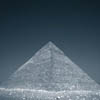 When the tracks that make up the first half of this EP were first released about a year ago on a split 12” with Eluvium, it represented a somewhat drastic change from what Jesu had been doing up to that point. All the way through Conqueror, there had been a definite concession to shoegaze pop, but still enshrouded with the monolith riffs that established Godflesh as a force to be reckoned with prior. But here was a mostly electronic, very calm and almost pure pop record that, in hindsight, heralded more recent works (the split with Envy, parts of Pale Sketches). And now these tracks are available on CD with two alternate versions that represent a very different take on the original material.
When the tracks that make up the first half of this EP were first released about a year ago on a split 12” with Eluvium, it represented a somewhat drastic change from what Jesu had been doing up to that point. All the way through Conqueror, there had been a definite concession to shoegaze pop, but still enshrouded with the monolith riffs that established Godflesh as a force to be reckoned with prior. But here was a mostly electronic, very calm and almost pure pop record that, in hindsight, heralded more recent works (the split with Envy, parts of Pale Sketches). And now these tracks are available on CD with two alternate versions that represent a very different take on the original material.
In a recent interview, Justin Broadrick said that he specifically sat down to make pop music on the original issue of this. While his definition of “pop” might differ from the masses, there is a different quality to these songs versus the ones that led up to it. The difference is obvious from the moment “Farewell” begin: a stripped down electronic percussion section and what is either a guitar that sounds like a synth or a synth that sounds like a guitar leading the slow pace of the track. Coupled with Broadrick’s oddly clear and audible vocals, it was a notable departure at the time it came out, and is no less wonderful a year later. None of the traditional metallic riffing pops up here, and the track even ends with a bit of vibraphone that would have been an odd inclusion on previous tracks. The alternate version that is exclusive to this CD issue strips some of the pop elements out, turning the percussion to a click and a cavernous reverbed kick drum. There are more synthetic textures, but the simple, elegent melody remains, as does Broadrick’s vocals. While feeling significantly more stripped down and more “experimental” than the original, it retains the regal beauty, and even some chugging guitar riffs that weren’t in (or at least weren’t audible in) the original.
“Why Are We Not Perfect” follows a similar structure to “Farewell,” but rather than focusing on electronics, hinges more on multitracked rhythmic guitar and simple drum programming. While structurally more sparse than most of the previous Jesu material, the simplicity owes more to Joy Division than the usually cited My Bloody Valentine. The alternate take adds greater lushness in the form of keyboards and more effects on the guitar playing, which actually makes for a very different sounding track that still feels like the original (as contradictory as that may sound).
Between the two original tracks is the short instrumental “Blind and Faithless,” which was more of the traditional Jesu guitar workouts, but buried under an even thicker layer of gauzy electronics and overdriven bass synth. While the track sounds great, it feels unfinished, like an excerpt from a longer song that didn’t get released. Luckily, the Japanese pressing of the EP includes an alternate version of this track as well, but rather than the short three minute original duration, it’s a full six minutes that leans more heavily on the guitar and a more traditional, less electronic based rhythm section. There are even vocals, as buried as they are in the mix.
While both of the alternate versions that are added to this CD issue are good, personal preference is that the original tracks are still the better, more fully realized versions. They’re nice to have and are enjoyable, but still seem secondary to the original material. The exception to this being the alternate of “Blind and Faithless,” which feels so much more fully realized, but is unfortunately relegated only to the Japanese market. Musically, it represents the first stabs Broadrick made towards electronics based Jesu work, channeling his old Techno Animal project in a softer, milder setting. The disc is an expansion of an already multifaceted project that just seems to get better with each release.
samples:
Read More
- Administrator
- Albums and Singles
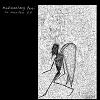 That inimitable style of drawing that graces this EP's cover lets us know exactly what we are in for: rough and ready songs about death. Just like the cover, the songs here are from the same mold as previous outpourings of gloom from the trio. There is no massive shift in style or approach: ten songs; 20 minutes; in and out like a SWAT team on a midnight raid.
That inimitable style of drawing that graces this EP's cover lets us know exactly what we are in for: rough and ready songs about death. Just like the cover, the songs here are from the same mold as previous outpourings of gloom from the trio. There is no massive shift in style or approach: ten songs; 20 minutes; in and out like a SWAT team on a midnight raid.
“A Handful of Dust” takes T.S. Eliot’s famous line from The Waste Land and turns it into a parody of itself. What is a chilling and resonant line from Eliot’s poem is a pantomime snarl in the hands of Nick Blinko. However, Blinko can hardly be expected not to stamp his own identity on any line he sings, especially when it is such a cherished line in literature, and in the context of No More Pain as an entity it works a lot better than taking the song at face value. Nearly every song here is about death and annihilation (especially the track “Annihilation”), not exactly a cheery record.
Blinko’s venom comes through on most of the songs, especially on “Eyes of the Dead” and the title track. Grant Matthews and Jon Grenville’s no nonsense bass and drum assault hammer home the songs, conjuring up the previous image of a SWAT team thundering up a staircase and crashing through a heavily barred door like it was paper. The macho vibes disappear for a moment on the quirky “Doodlebug Baby,” a song most incongruous on such a bleak album (though the dark humour does not move away totally from the grim reaper’s scythe).
The EP closes with a cover of Pachelbel’s Canon in D Major (transposed to the key of E to suit the guitar/bass setup of the band). It is such a convincing appropriation of the piece that when I first listened to the album I was racking my brains trying to figure out what classic punk song was being covered but it was only when I remembered to check the sleeve notes that I realised what was going on. This is a far better commandeering of a cultural treasure than the above-mentioned Eliot quotation; a nudge and a wink at the end of so many songs about obliteration.
Yet there is something about Rudimentary Peni in 2008 that is lacking. Punk has long been a hollow shell of itself and any bands from that era that are still around have gone down one of two roads; greatest hits money spinners like the Sex Pistols or dramatic redevelopment projects like Wire. Being contrary curmudgeons, the Peni have walked a middle ground. They have not embraced change like some other bands have, at its heart No More Pain is a direct sibling of the group’s older material with a shinier production. Equally, they cannot be accused of “selling out” as they are hardly the kind of band kids in clothes shops want to listen to. They are dwellers of a limbo, still credible but not exactly lighting the world on fire.
samples:
Read More
- Administrator
- Albums and Singles
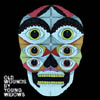 Nobody has ever been able to explain to me just how we went from the awesome diversity and promiscuous intermingling of '90s alternative music to the present day's drab dichotomy of wussy hipster twee and cathartic yet indigestible metal. Specifically, I lament the loss of that seemingly dying animal known as noise rock, its Amphetamine Reptile and Touch & Go fueled heyday woefully behind us. Yet thankfully there are more than a few pilgrims to the jizz-soaked shrine to The Jesus Lizard, the obsidian monolith of The Melvins, and the crumbling temple of Girls Against Boys.
Nobody has ever been able to explain to me just how we went from the awesome diversity and promiscuous intermingling of '90s alternative music to the present day's drab dichotomy of wussy hipster twee and cathartic yet indigestible metal. Specifically, I lament the loss of that seemingly dying animal known as noise rock, its Amphetamine Reptile and Touch & Go fueled heyday woefully behind us. Yet thankfully there are more than a few pilgrims to the jizz-soaked shrine to The Jesus Lizard, the obsidian monolith of The Melvins, and the crumbling temple of Girls Against Boys.
No Fun Fest friendly outliers like Hair Police and Lightning Bolt hold court at the fringes, to be sure, yet I'm far fonder of those who remember to actually, um, rock amidst the sheer hellish miasma that too often entices artists into more abstract and masturbatory directions. Recent years brought breakout sensations Pissed Jeans along with a number of grimy local heroes and zeros eager to grab that brass ring of indie stardom. As this appropriately brief new album makes clear, Young Widows possess the necessary aggression, attitude, and craftsmanship to resolve the gap that less impressive and comparatively weaker players like No Age fail to bridge.
Interestingly, the blogosphere, caught navel gazing in the self-referencing and self-legitimizing echo chamber that characteristically insulates it from so much great music, has taken to these Louisville sludgers like a newborn to a plump nipple or an unqualified Alaskan governor to a porcine congressional earmark. Arguably, advance word of Converge guitarist Kurt Ballou's role in the producer's chair for Old Wounds, while perhaps immaterial to the final results, added more of that intangible commodity known as credibility to the latest work from the Jade Tree alums, now safely housed at Temporary Residence. Unafraid of influences and hungry for progression, Young Widows plow through eleven heavy frenetic cuts that induce a tilt-a-whirl effect, simultaneously ebbing and flowing with concurrent waves of euphoria and nausea. While neither as nastily confrontational as David Yow nor as aurally hideous as Buzz Osborne, the members evidently hold these archetypes in high regard without succumbing to sloppy emulation. Opener "Took A Turn" blends the raw ingredients from the aforementioned with remarkable restraint and unsubtle mirrorglass shards of grunge era pop. "Old Skin" lurches from the Churchill Downs manure with stoner-grade headbanger potential, while comparatively subdued "The Guitar" maximizes the impact of its sparse instrumentation with hypnotic vocal repetition.
As much as these tracks invigorate and delight, there's truly nothing more gratifying for an AmRep enthusiast here than the raw bloody stinking meat of upbeat, downtuned grinders like "Lucky And Hardheaded" and "Delay Your Pressure", or even the familiar belligerence of swaggering standout "The Heat Is Here". With a noise rock resurgence of refurbished pioneers and teeth grinding youngbloods coming down the pike, Young Widows assertively assume dominant roles in the unexpected revival, reeking of promises to bring down as many lazy, cross-armed bloggers along the way.
samples:
Read More
- Administrator
- Albums and Singles
title: How Shadows Chase the Balance
catalog#: krank120
formats available: CD
release date: september 29, 2008
content: On his second full length release, Mathew Sweet uses the same formula that he has employed previously; one microphone, one acoustic guitar, a few random instruments, a couple of field recordings, and a deft, understated touch with the mixing process. He locked himself away in his home studio (to be honest, his bedroom) and no one else heard a single note until he was finished.
This album is a further step away from the "folk" label, which never seemed all that appropriate to Mathew's work in any case. If you record solo with an acoustic guitar the description is somewhat inevitable. But the results might more rightly be construed as "acoustic death metal" considering the themes of death, alienation, fear, hatred and isolation that are his forte, as well as his affinity for gothic imagery.
Mathew states that the album was mostly recorded at night because there was less background noise to contend with in his neighborhood at that time of day. But if you listen closely you can still hears small bits of rain hitting the window, and cars sliding by on wet roads.
The final result is one of the most unassuming, and engaging recordings of the year. It is intimate, extremely personal, and spectral in presence.
context: The second full length release from this uk resident follows his Lion Devours the Sun album from late 2006 on kranky. A lot of artists are described as "outsiders" or "underground", but with Mathew Sweet this is actually an apt description as he belongs to no 'scene' and is working on the farthest fringes of the 'music business'.
track listing: 1. Mission Creep 2. Things Not To Be Done On The Sabbath 3. I Can't See A Thing In Here 4. Quiet When Group 5. Pitiful Shadow Engulfed In Darkness 6. A Spirit Harness 7. Found On The Bodies Of Fallen Whales 8. Last Glimmer On A Hill At Dusk
press quotes for Lion Devours the Sun:
"Hauntingly beautiful music that is oft mistakenly labeled "folk." This is something darker, something much more sinister, and Mat Sweet's songwriting muse dives into the troubled waters of a tormented soul and the mysterious forests of the mind. This is the best record of the year, period." Mundane Sounds
"The spare use of his blurry instrumentation is the secret ingredient to the horror in these songs. Sweet packs a punch for such a quiet fellow, and his vortex is indeed a powerful one."" Tiny Mix Tapes
"...the visions of human frailty channeled here are dry like a mouthful of dust and stirring in their haunted stillness." The Stranger
Read More
- Administrator
- Albums and Singles
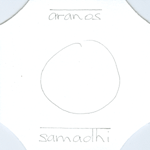 Devising a method to capture a moment of exaltatio with sound is no small feat. Aranos attempts to do just that with a minimal and powerful arrangement of six Tibetan singing bowls and wood flute. Whether this recording brought me closer to release from duality is up for debate, but it certainly did not pull me further away.
Devising a method to capture a moment of exaltatio with sound is no small feat. Aranos attempts to do just that with a minimal and powerful arrangement of six Tibetan singing bowls and wood flute. Whether this recording brought me closer to release from duality is up for debate, but it certainly did not pull me further away.
Standing on its own, Samadhi is a gorgeous slab of ambient music. While this is drone music at its core, the subtleties of the acoustic instruments being played are captured in detail enough that the listener can either drift with the music or focus on minute detail. There is no question here as to whether Aranos as created a gorgeous piece of atmospheric sound or engaging music, he has achieved both simultaneously. As the mist that is this piece continues to roll it definitely gains a charge that seems to be bringing it closer and closer to a moment of unification with all.
The concept surrounding this release is what intrigues me the most. Consider the intense meditative discipline it should and most likely would take to release oneself from the grips of duality, cynicism, materialism, and desire. Indeed, in the liner notes for Samadhi it is written, “Preparation for it involved 35 years of meditation and a lifetime study of sound.” Now imagine achieving this state while also recording and playing six instruments. When I attempt this, I’m left feeling as thought the recording of this music certainly couldn’t have brought me any closer to the Godhead. My feet would be too firmly planted in the material world while creating a piece as intricately flowing as this.
Perhaps this release is only intended to be an aural representation of Samadhi and not a document thereof. Many musicians speak of a state of spiritual communion being reached while practicing their art, but it is another thing all together to use it as a catalyst to attain something of an ultimate religious experience. If Aranos truly intends to purport that Samadhi was reached on the midsummer’s night this was recorded, props.
samples:
Read More
- Administrator
- Albums and Singles
 It has been six years since this Chicago trio, best known for constructing mainly instrumentals based around two bass guitars and a set of drums, released their last record, 2002’s Millions of Brazilians. In that time it seems that their sound has been slowly fermenting and evolving in sparkling and unexpected ways, not least with the addition of vocals, and with the further addition of strings, guitar, and keyboards. What results is a strange musical dislocation, a selection of 12 scintillating, yet simultaneously bittersweet, indie-tinged rock songs that bubble along with a nervous, tangential energy that often goes off in totally unforeseen directions.
It has been six years since this Chicago trio, best known for constructing mainly instrumentals based around two bass guitars and a set of drums, released their last record, 2002’s Millions of Brazilians. In that time it seems that their sound has been slowly fermenting and evolving in sparkling and unexpected ways, not least with the addition of vocals, and with the further addition of strings, guitar, and keyboards. What results is a strange musical dislocation, a selection of 12 scintillating, yet simultaneously bittersweet, indie-tinged rock songs that bubble along with a nervous, tangential energy that often goes off in totally unforeseen directions.
Having said all that, the surprises started before I even put the CD in the player. There was something about the package (allied to the press release) that led me to form the notion that Dianogah were a loud noisy hardcore bunch of unreconstructed shouty hooligans. However, what flowed from the speakers was the equivalent of getting culture shock or an unexpected temporal dislocation: here are beautifully crafted but somehow slightly fractured songs built from glassine melodies, chiming harmonies, and sinuously plaintive vocals. Styles veer from the introspective to the out and out explosive, in the process creating and presenting us with a whole palette of textures and moods. Whatever they decide to play for us, it’s never less than engaging and involving, a multihued exploration of feelings and atmospheres painted in a full spectrum of shades and subtle tones.
It’s hard to know where to start, such is the breadth and range on offer here. A brief delve into just the first half of the album is enough to convince anyone of Dianogah’s pedigree. “Oneone,” the album’s opening track, bases itself around a languid clipped bass-line framework, upon which are hung querulous vocals and ringing guitar harmonics that seem to hang in the air. The title track emerges from the other end of the spectrum, letting its hair down with a full workout of fuzzed up guitar ‘n’ bass and pounding percussion. The diametrically opposing “Andrew Jackson,” meanwhile, surprises me by opening with the refrain from Monty Python’s “Always Look on the Bright Side of Life,” before settling into a mournfully beautiful guitar and violin piece, capable of evoking bittersweet memories and feelings, and full of pathos. Following on from that is the bouncy “Sprinter,” replete with the sweet vocals of Stephanie Morris (The Pawner’s Society, Scotland Yard Gospel Choir), but don’t let that sweetness fool you. A frisson of edginess runs beneath that charmingly honeyed voice wafting over the shimmering keys and Andrew Bird’s bowed and plucked violin. All the while the whole is firmly anchored by Kip McCabe’s drum-work, and Jay Ryan’s and Jason Harvey’s bass engines.
This is but a slight dip into the many facets of a broad and wide-ranging set of songs. With an album of this nature it’s hard to encompass the full impact in a short review and it’s nice to be confronted by an offering that refuses to stay still or occupy the same patch of ground for too long. Some would no doubt be annoyed by the butterfly character of Dianogah, flitting as it does between different stylistic flowers. However, there is also equal certainty that the nectar thus sourced is of a premium quality. In its superficially bitty stylistic approach lies its greatest strength for me. Saying that, there is still more than a hint of overall cohesion gluing everything together, enough anyway to stop this from becoming nothing more than a nervous hopping about, uncertain of where to alight. Dianogah knows exactly where it is going and where the best musical blooms are; one has only to listen to this to know that.
samples:
Read More
- Administrator
- Albums and Singles
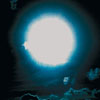 Christoph Heemann's and Timo Van Luijk's latest offering on Robot Records is a frustrating combination of expected, quiet beauty and unexpected experimentation.
Christoph Heemann's and Timo Van Luijk's latest offering on Robot Records is a frustrating combination of expected, quiet beauty and unexpected experimentation.
Robot Records
Open Air is musical moonshine; it was recorded live and out doors, by the light of the moon, presumably for a small group of friends. The entirety of the album consists of many of the elements expected from this duo: slow, low-end drones; a counterpoint of high, slightly metallic rustlings; and just a smattering of odd percussive sounds or otherwise out-of-place errata. Just a few elements and a bit patience yields an undeniably gorgeous record that scares up equal parts paranoia and reverence. When the sounds are worked up into an intensity of any sort, Heemann and Van Luijk smartly provide a lull and introduce new or slightly altered elements in order to keep the mix dynamic. There's nothing dull about their process nor the resulting music, but there's a level of predictability to this group's music that's difficult to ignore. Fans of Mirror and other like-minded groups may be able to grasp the scope of this album within their imagination and thus plot out its course before even hearing the first minute.
The album begins with a hushed drone, a sudden thud, and with the sounds of laughter or conversation evident in the background. This is the only indication that the album has any live element to it whatsoever and it lasts only seconds. Over two long tracks, In Camera builds up rumbling soundscapes and understated howls that move gently back and forth. The second song features several sections where the instrumentation employed to make all this sound is almost identifiable; I hear a Japanese flute and perhaps a pump organ winding into each other seamlessly, perhaps a detuned guitar string being teased slowly, too. Yet, the music remains alien and disconnected from the real world. By the time the record has ended Open Air, like the best drone records, has transported you somewhere else and induced amnesia. The sound stops and then all the sound in the room returns to claim dominance.
This album is being released in multiple formats with multiple additions to entice the collector: the first 88 copies of the 400 CDs pressed come with a bonus CDR of music recorded live on Dutch radio. The 105 copies of the 2xLP version feature a bonus disc with solo pieces from both Heemann and Luijk. If In Camera's output is somewhat predictable, the bonus CD containing the VPRO performance more than makes up for that fact. It begins much like the first song from Open Air but quickly establishes itself as a unique entity. Heemann and Luijk break their minimalist habits a bit and inject their frozen tones with more activity than is usual. The patient craftsmen that they are, they slowly build monstrous cascades of sound that are far more imposing than what's featured on the record proper. There are instrumental passages that sound as though Ravi Shankar might've been part of the group and, better yet, there are mammoth stretches of slightly more distorted noise that really fill out In Camera's sometimes limited sound. Hearing plucked strings and the dulcimer on this performance turned In Camera's drone work into something much, much more exciting and much more expansive. I find myself spending more time with this disc and enjoying it for its more extensive palette.
Open Air is a fine record, but I desire something extra from Heemann and Luijk. I want to be surprised and taken by the music instead of knowing what to expect, but enjoying it nonetheless. Other collaborations featuring Heemann are exemplary examples of just how pliable and exciting drone records can be; his work with Merzbow comes immediately to mind. For the time being, I'm pleased with what has become this duo's specialty, but I'm hoping to see them move into new territory in the future. If they can do it on VPRO, then surely they can do it on record.
samples:
Read More
- Administrator
- Albums and Singles
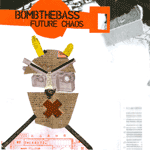 Tim Simenon presents his first full-length album of new material since 1995's Clear. Future Chaos is not quite a return to form, but an evolution of the familiar BTB sound, an album of leftfield electronic vocal pop curiously unstuck in time, informed by decades of big beat, trip-hop and acid house, but carving out its own idiosyncratic niche.
Tim Simenon presents his first full-length album of new material since 1995's Clear. Future Chaos is not quite a return to form, but an evolution of the familiar BTB sound, an album of leftfield electronic vocal pop curiously unstuck in time, informed by decades of big beat, trip-hop and acid house, but carving out its own idiosyncratic niche.
One of the most admirable aspects of this album is its restraint. Many of these songs date back to the late 1990s, and Simenon apparently recorded versions with full instrumentation and multiple synthesizers. At some point last year, Simenon returned to this material, but was unhappy with the previous arrangements, and decided to remake the entire album with nothing but a MiniMoog and a laptop. This was a smart decision, as this restriction instantly lends the album a strong sense of cohesiveness, a quality not often found in multi-vocalist electronic albums. The fat analog basslines, spidery synth figures, and chunky rhythms created with the Moog make the album a real treat for fans of analog soundcraft. The whole album chugs along with a sound that feels refreshingly uncalculated; a dark, playful, and mostly quiet suite of bedroom pop songs. If this album has any contemporary point of reference, I would say that it sounds much more like Matthew Dear's Asa Breed than newer works by BTB compatriots such as Meat Beat Manifesto or Massive Attack. There aren't any concessions to dubstep here.
The name of the album is perhaps its only major weakness, a name so generic it sounds like it was produced by drawing at random from a big hat of techno clichés. There's nothing particularly chaotic or futuristic about this album, and if it does touch on contemporary anxieties about the future—pollution, technophobia, isolation—it does so in a way that sounds personal, withdrawn. The guest vocals contribute to this atmosphere, a small selection of exclusively male vocalists all of whom take similar approaches to the material. With the exception of Jon Spencer's fiery contribution, the vocals aim for quiet intensity, soulful whispers and moody introspection. It's an album that lurks in the shadows, far away from warehouse raves and chillout lounges, in alleyways and small after-hours gatherings. As such, it may be something of a disappointment to those looking for a club banger with the bombast of "Beat Dis" or "Bug Powder Dust" (or even "Buffalo Stance"), but Simenon is aiming for something different this time around.
Listeners who have followed Simenon's production work over the past two decades will recognize shades of Depeche Mode in "Smog," in which Paul Conboy's multitracked vocal harmonies are set against a dense background of percolating synthesizer. There are some truly thick and delicious synth sounds on this record, courtesy of Moog's signature sound, of course, but also BTB's mastery of the instrument. "Butterfingers" is my favorite track on the album, a weird little electropop song that is the most instantly catchy song on the album. While the infectious rhythm and bassline are a big part of the charm, as are strange lines like "I play Tetris in my eyelids," it's also refreshing to hear David Best's vocals outside of their usual Neu!-style lockgrooves of Fujiya and Miyagi. The track is psychedelic and shimmering, but still somehow claustrophobic and disturbing. (As a side note, if you haven't seen the video for this track, by all means check it out.) "Burn the Bunker" is not nearly as bombastic as its title seems to indicate; instead, it's a quietly urgent electro track with hints of jungle drum & bass, vocals contributed by trip-hop artist Toob. The refrain of "Cheap technology and gasoline/My future don't smell like magazines," neatly encapsulates the album's unorthodox deconstruction of mass culture and technology in these pre-apocalyptic times.
"So Special" is yet another standout, an excellent song given an impossibly dense arrangement that seems all the more impressive when you remember that it's all made from one MiniMoog. In "No Bones," Conboy's vocals are cut up to mirror a sparkling synth arpeggiation, just another layer of audio detail in a melancholy, urbane pop song that benefits tremendously from its dense, atmospheric production. The tracks featuring Conboy do the majority of the emotional heavy lifting for Future Chaos, but the other contributors all bring something unique to their tracks. Mark Lanegan of Screaming Trees contributes vocals to "Black River," which sounds like an attempt to turn an alt-country song into a dark electro slow-burner. It's not an altogether convincing juxtaposition, and Lanegan sounds a bit set adrift in the dense electronics, but it's never boring for its four minute running time. The album ends with "Fuzzbox" with vocals by Jon Spencer, the only real tent-burner on the album. Spencer's bluesy punk snarls are set against Simenon's sheets of fuzzy drone, with rubbery acid basslines peeking out everywhere. It's breathlessly exciting stuff.
The album is a bit slim at only nine songs (although the double-disc special edition does contain a bonus track and seven remixes of album tracks by various producers such as Future Funk Squad and Gui Borrato), and a relatively short running time, but it packs in the quality and contains zero filler. It's not quite the album that BTB fans might have expected, and indeed it doesn't slot in easily with any of the electronic styles currently in vogue. To my mind, this is a bonus, as the music cannot be so easily dismissed as the product of this-or-that movement, as happens with so many electronic albums. Whatever the title might suggest, Future Chaos is a work of surprising restraint and control, and if it sometimes looks towards the future, the strength of the songwriting assures that the album has the potential to be timeless.
samples:
Read More
- Administrator
- Albums and Singles
 It comes as no surprise that this Kentucky based trio has produced a slab of blown speaker noise rock that parents and small animals will be disgusted with. However, something can be unsurprising and yet still be completely satisfying, and I don’t think anyone who enjoys music is petitioning for a “Hair Police covers A Flock of Seagulls” album. Although, that would probably be pretty awesome.
It comes as no surprise that this Kentucky based trio has produced a slab of blown speaker noise rock that parents and small animals will be disgusted with. However, something can be unsurprising and yet still be completely satisfying, and I don’t think anyone who enjoys music is petitioning for a “Hair Police covers A Flock of Seagulls” album. Although, that would probably be pretty awesome.
Instead, the opening of “Strict” sets the tone that the remainder of the album will follow: A guitar tortured into a repeating shriek, a bassline that’s so overdriven that it muffles the rapid-fire drums, and screamed vocals that may or may not be actual words. The air-raid siren guitar is almost like a warning for everyone around to get the fuck out, though the chaotic sludge around makes escape impossible.
The band retreats a bit for “Intrinsic to the Execution,” which gives a little more room to breathe and a slower pace. Showing a greater ear for structure, the opening swell of distorted bass and controlled feedback, later being met with harsh screams and sustained electronic tones. Continuing the feel of slow menace, it’s almost like a metal band covering early MB or Ramleh in a garage somewhere.
The overly lo-fi recording of “Paralysis Simulacrum” sounds like it is employing a bit of the ol’ metal junk percussion here and there, but that could just be shitty drum mic’ing. This, plus the gurgling vocals and electronic pulses sound ready to break out into a full on blast of some unclean rock/noise hybrid variety, but never reaches that point, instead staying restrained and leaving the listener with a case of blue balls.
“Mangled Earth,” at least, gives the climax desired: though the sustained guitar noise and oscillator bass line remain the dominant element for the most part, the concession to blasting spazz-core drumming towards the end is much more relieving and satisfying. The closing “Freezing Alone,” for all its noise elements, sounds more in-line with the current crop of doom metal, both on the vocal tone and thick guitar and bass distortion, though the insane rapid-fire drumming causes the pace to be a bit different than any other similar band.
There’s no real crossover appeal or severe innovation going on here. It is essentially a by-the-numbers noise and rock hybrid that, while not doing anything new, does a lot of things very well. And part of those things it does well includes destroying speakers and causing children to run in terror, which, as Martha Stewart would say, is a very good thing.
samples:
Read More
- Administrator
- Albums and Singles
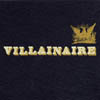 An odd amalgam of post-rock experimentation, jazz influences, and a touch of 1970s pop, this is an ambitious disc that definitely stands out amongst the crowd with its idiosyncratic pedigree. And besides, who can’t appreciate an album of nervy post-rock that references Big Trouble in Little China and the Wu-Tang Clan in the liner notes?
An odd amalgam of post-rock experimentation, jazz influences, and a touch of 1970s pop, this is an ambitious disc that definitely stands out amongst the crowd with its idiosyncratic pedigree. And besides, who can’t appreciate an album of nervy post-rock that references Big Trouble in Little China and the Wu-Tang Clan in the liner notes?
There is a definite sense of the dramatic throughout the entire album, not only in the arrangements (including horns and strings), but in the somewhat operatic vocals of Sam Mickens that aren’t quite over the top, but close enough to the edge that it could be problematic if the lyrics weren’t so damn abstract to balance it out. The good-natured presentation of the disc is what prevents it from straying into the overly pretentious, but instead maintains a healthy absurdist sense of humor.
Both “Make Mine Marvel” and “Monster Island Czars” conjure images of spy movie tension with the thick mixes, taut rhythms and strings right out of a 1970s disco ballad. That mix of tension and lush pretense is what gives the album its overall unique feel and vibe. On tracks like “The Dancing Destroyer” the nervous energy and tense pace is almost too much, creating an aura of discomfort just from listening, like the expectation that something bad is going to happen at any time.
Others have a slightly more inviting ambience, the jazz influenced rock sound of “Death Duel Productions” still has that flair for the dramatic, but in a less tense, more inviting way. “Lamentable” and “Holliston” both lean towards more sparse production, the former based around acoustic guitar and a subtle, tasteful string section, while the latter focuses on piano and vocals, pulling it more into the world of classic R&B than anything else. Only on “Sword Cane” does the sound seem to squarely fit into traditional “rock” sounds, and even then it makes for a twitchy, nervy experience.
The Dead Science clearly have their own distinct sound that, oddly enough, isn’t out of place with their label-mates on Constellation. Post-rock might be the best way to describe their odd, abstract take on the traditional, but by augmenting it with a bit of jazz here and there, and the lush, almost cheesy 1970s pop instrumentation, an entirely different sound and sense is created. Mix in the bent towards the absurd and there’s a distinctly strange, but engaging combination there.
samples:
Read More
- Administrator
- Albums and Singles
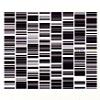 I have always enjoyed Ikeda's albums but never truly appreciated them until I saw a live performance by the man last year. Seconds into the performance I realized that I was listening to his albums at an unreasonably low volume. Afterwards I was sure to play his CDs at the appropriately loud level and they blossomed from being great examples of electronic music to being works of true beauty. This is the first release since that I have listened to properly from the first instant and it is a blinder.
I have always enjoyed Ikeda's albums but never truly appreciated them until I saw a live performance by the man last year. Seconds into the performance I realized that I was listening to his albums at an unreasonably low volume. Afterwards I was sure to play his CDs at the appropriately loud level and they blossomed from being great examples of electronic music to being works of true beauty. This is the first release since that I have listened to properly from the first instant and it is a blinder.
As per usual, the amount of information included with this album is minimal. Aside from recording dates, titles and the barcode art of the cover (interestingly there is no commercial barcode printed on the sleeve), the only concrete piece of information is that this is part of Ikeda’s ongoing Datamatics project. However, according to Ikeda’s own site:
“test pattern is a system that converts any type of data (text, sounds, photos and movies) into barcode patterns and binary patterns of 0s and 1s. Through its application, the project aims to examine the relationship between critical points of device performance and the threshold of human perception.”
What this means is very much up to the individual. Ikeda is famously silent about what is work means or could mean, leaving it up to each member of the audience (whether live or seated in their own homes) to come to their own conclusions. My opinions on Test Pattern are still in their formative state but my take home point, should you choose to accept it, is that Ikeda is highlighting that the vast majority of information out there is not in a format that we can understand. Barcodes and binary form the basis of communication in commerce and the world at large, these are machine-readable systems that cannot be understood directly by humans. First, by taking media familiar to us (such as film, sound and pictures) and converting them to this data format, Ikeda shows that no matter how realistic these images are, they are still just the edge of what we can experience (the 1s and 0s will always be alien). Secondly, by further converting these pieces of data into sound, he rehumanises the data and allows us to engage it in another way.
Philosophical blithering aside, it sounds exceptional. The aesthetic present on 2005’s Dataplex is instantly familiar but the music here is far more composed sounding: both deliberate and rhythmic. Some moments could easily be built up into dance tracks a la Autechre but the strange nature of data pulls it away from the brink. Played at the right volume, frequencies high, low, and everywhere in between stream from the speakers. The room rattles and the body tries to respond to the complex rhythms but gets knotted and lost. Each piece becomes steadily more complex, starting with a relatively short and simple “Test Pattern #0001” and peaking with the cluster-fuck of “Test Pattern #1101.”
In a career of consistent high quality, Test Pattern sticks out as being one of the more viscerally satisfying releases. Ikeda has cooked up a storm here but seeing that this part of the Datamatics project also exists as a live multimedia experience, I cannot help but feel that I am only seeing the tip of the iceberg. Considering the high power and resolution of modern home audiovisual equipment, I am surprised Ikeda has not explored the area of DVD further than he has. That being said, as long as he keeps releasing audio CDs like this, I’m not going to complain.
samples:
Read More